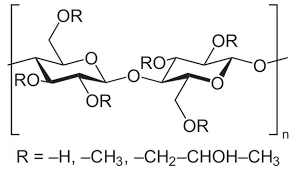
aug . 21, 2024 21:48 Back to list
Innovative Solutions for High-Performance HPMC Products and Applications
The Impact of HPMC Products in Modern Industries
Hydroxypropyl Methylcellulose (HPMC) is a versatile polymer derived from cellulose, an abundant natural resource. Renowned for its unique properties, HPMC has found widespread applications across various industries, including pharmaceuticals, construction, food, and cosmetics. As we delve into the significance of HPMC products, it is essential to highlight their multifunctional uses, benefits, and the potential they hold in advancing modern technology and improving product formulations.
Pharmaceutical Applications
In the pharmaceutical sector, HPMC serves as a critical ingredient in drug formulations. Its primary roles include acting as a binder, thickener, and film-former. HPMC is employed in the production of tablets and capsules, where it aids in controlling the release of active ingredients. This controlled-release capability is particularly crucial for enhancing therapeutic outcomes, as it allows for sustained medication release over time, improving patient compliance. Additionally, HPMC is utilized in preparing hydrogels and ophthalmic solutions, where its water retention properties ensure the stability and efficacy of the drugs.
Construction Industry
The construction industry also significantly benefits from HPMC products. They are incorporated into various construction materials, such as cement, plaster, and tile adhesives. HPMC improves the workability and consistency of these materials, making them easier to apply. It also enhances the water retention properties, prolonging the setting time, which is advantageous in hot conditions where rapid evaporation can occur. Moreover, HPMC contributes to the mechanical strength and durability of construction materials, enabling structures to withstand harsh environmental conditions.
Food Industry Innovations
hpmc products

In the food industry, HPMC is recognized as a food additive, often classified under E464. It serves numerous purposes, including as a thickener, emulsifier, and stabilizer. HPMC can improve texture and mouthfeel in various food products, ranging from sauces and dressings to frozen desserts. Being a plant-derived ingredient, it appeals to the growing consumer demand for natural and vegan-friendly products. Furthermore, HPMC is gluten-free, making it a valuable component in gluten-free baking, where it helps mimic the properties of gluten to enhance dough elasticity and improve the overall quality of baked goods.
Cosmetic Industry Advancements
The cosmetic industry has also embraced the benefits of HPMC. Its film-forming and thickening properties make it an essential ingredient in lotions, creams, and other formulations. HPMC enhances product stability and improves the sensory experience of cosmetics, providing a silky texture that many consumers prefer. Additionally, HPMC can serve as a vegan alternative to gelatin in products such as masks and other skincare items, adhering to ethical and dietary preferences of consumers.
Environmental Considerations
As industries strive to become more sustainable, HPMC products present an eco-friendlier option. As a biodegradable substance, HPMC reduces environmental impact compared to synthetic polymers. The use of HPMC aligns with global movements toward sustainability and responsible sourcing, highlighting the importance of natural materials in industrial processes.
Conclusion
In conclusion, HPMC products have emerged as indispensable components in multiple industries. Their unique properties facilitate advancements in pharmaceuticals, enhance construction materials, improve food products, and elevate the quality of cosmetics. As technology evolves and consumer preferences shift towards sustainability and natural ingredients, the demand for HPMC is poised to grow even further. The versatility of HPMC not only supports the development of innovative products but also contributes positively to environmental goals, positioning it as a key player in the future of various sectors.
-
Versatile Hpmc Uses in Different Industries
NewsJun.19,2025
-
Redispersible Powder's Role in Enhancing Durability of Construction Products
NewsJun.19,2025
-
Hydroxyethyl Cellulose Applications Driving Green Industrial Processes
NewsJun.19,2025
-
Exploring Different Redispersible Polymer Powder
NewsJun.19,2025
-
Choosing the Right Mortar Bonding Agent
NewsJun.19,2025
-
Applications and Significance of China Hpmc in Modern Industries
NewsJun.19,2025







